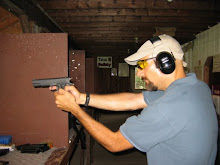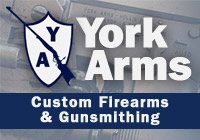Flight attendant downplays role in helping land airliner
(CNN) -- A flight attendant with a pilot's license who stepped in for a sick co-pilot said the experience was "not your ordinary workday," but downplayed her role in the safe landing of an American Airlines flight in Chicago, Illinois.
"This was not heroic by any means. I was just trying to be part of a team," flight attendant Patti DeLuna, 61, told CNN on Wednesday.
It's the classic "understudy gets her big break at the last minute" story, only in a much different way. It sounds like she handled herself with the utmost of confidence and professionalism, and completed a difficult task like she was trained to do. I've never done any flying to speak of, but I would assume that the skill set one uses to pilot a single engine prop plane are significantly different from those used to fly a commercial jet. Much like someone taking the helm of the QE2 because they have a waverunner they use on the lake...
Congrats to Ms. DeLuna for her exemplary work!
That is all.







5 comments:
"This was not heroic by any means. I was just trying to be part of a team,"
I don't know why she's so modest. Landing a big airliner like that is very different from the planes she probably flies. It's an entirely different type of flying.
Altogether.
:)
I've got a couple of friends who fly airliners who would disagree with Kevin a bit. It's still stick and rudder + altitude management flying, only a lot bigger/faster/heavier, with a lot more people on board.
Then again, I've never landed anything heavier than something with four seats and a 180hp engine, so I'll take their word for it.
It's also worth noting that she wasn't the one doing the actual landing, the Captain was. Not that the FO's job isn't important.
Of course it helps to have a commercial pilot's rating... :-) But yes, she done good!
"..not heroic by any means.... etc"
Eh, I'm actually going to agree with her. She sat down to back up the pilot. Likely the only controls she touched were the radio frequency and altimeter knobs. My dad who learned Army RT procedures 50 years ago and saw some TV groundschool classes in the early 70's could have done as well.
Normal airline flying divides the cockpit labor by having one fly the plane and the other handles the radios. They back each other up and cross check each other on altimeter settings, headings and altitudes. This keeps both pilots heads in the game. The non-flying pilot acts as a "hot spare" for the flying pilot, ready to step in if the flying pilot is suddenly incapacitated.
Even if she just dialed up the new frequencies as they came up, that's a big help to the pilot. And if she was competent with the radios 20 years ago, it's like riding a bicycle... you don't forget.
Also, the Commercial Pilot certificate is one of the easiest to obtain (once you have the private). The rating mirrors the private rating but with tighter tolerances and a couple new maneuvers.
However that only allows you to earn money flying. It does *not* allow you to fly an airliner. For that you need an ATP certificate (Airline Transport Pilot) + Type Rating appropriate to the jet to be flown. The ATP is a very demanding rating.
She sat in the seat and backed up the pilot. Good job, but really. It's no big deal.
Ummn, I guess nobody got the Airplane! reference in my original post...
:(
Post a Comment